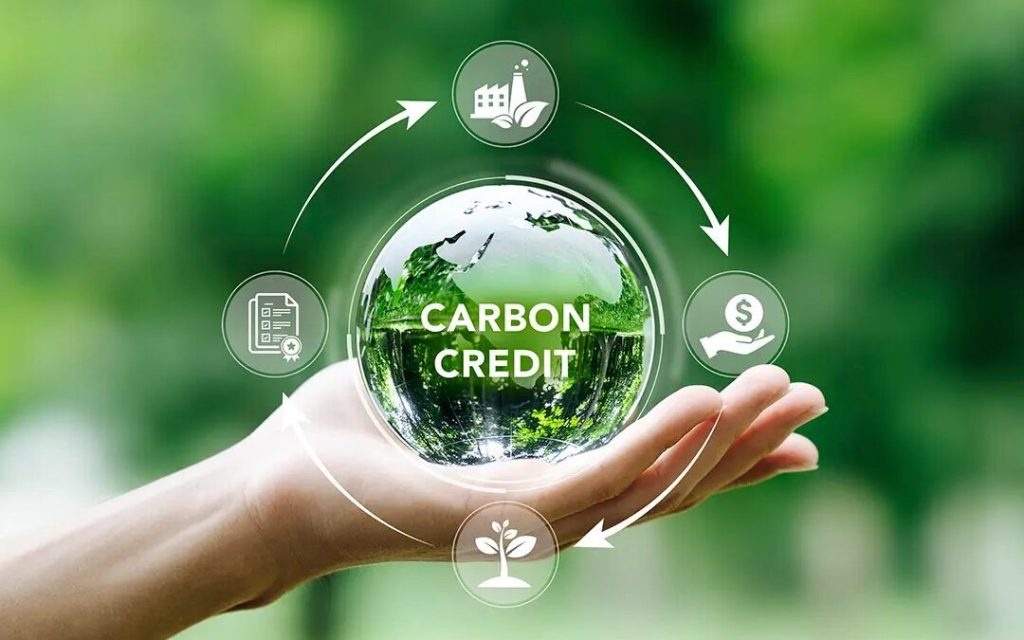Not gold. Not crypto. But carbon — the new currency of survival. 👇
The Beginning of the Air Economy
We’ve always fought over land, oil, and gold. Soon, we’ll fight for something far more basic — air.
Every factory, plane, and refinery will have a pollution limit.
Go beyond it — you pay.
Stay below it — you earn.
That’s the new game called carbon trading, and it’s about to redefine the value of everything we know.
Forests, farms, and clean lands — the ones we ignored for decades — will soon be the next trillion-dollar assets.
The Facts Behind the Fire
This isn’t fantasy. The Indian government has already passed the Energy Conservation (Amendment) Act, 2022 — the legal backbone to launch India’s own Carbon Credit Trading Scheme.
The official rollout is expected in 2026, creating India’s first regulated carbon market. It means companies that emit carbon dioxide beyond their set limits will need to buy carbon credits, while those that stay below their limits — or help absorb carbon through forests, soils, or renewable projects — will earn credits to sell.
The current Indian carbon credit market is worth around ₹33,000 crore and is projected to grow more than ten times by 2030. Analysts predict that carbon prices in India could touch ₹1,000 per tonne of CO₂ by 2040 — and that’s just the start.
This is not some green fairy tale. It’s the birth of the next financial system — where clean air becomes capital.
The Shift No One Saw Coming
By 2040, we might not measure wealth by how many acres of land you own, but by how much carbon you can absorb or avoid.
Factories, cement plants, airlines — all will have to buy credits.
Meanwhile, farmers, forest owners, and those running clean projects will sell those credits.
A small patch of restored forest could be worth more than a gold mine.
A healthy soil could feed a family — not just with crops, but with carbon income.
A clean village could be richer than a polluted city.
The Revolution in Disguise
When India’s carbon exchange goes live in 2026, the first phase will focus on power, steel, and cement industries. But by 2030, it will expand to agriculture, textiles, and even transport.
This means — and here’s where it gets real — even a small weaving unit or a dyeing facility could be part of a carbon accounting chain.
If you’re using solar energy, organic dyes, or regenerative cotton, you’ll earn credits.
If you’re using coal power and synthetic chemicals, you’ll pay credits.
This isn’t environmental charity. It’s economic evolution.
The world will start rewarding those who preserve and punishing those who pollute.
India’s Hidden Advantage
India, unlike the West, still has vast green zones — forests, farmland, mangroves, and traditional villages that live close to nature. These are not backward areas anymore — they’re carbon reservoirs.
Our degraded soils alone can potentially store billions of tonnes of carbon, and if even 10% of that is monetized through carbon credits, India could generate tens of billions of dollars annually.
For once, rural India can lead the future economy — not lag behind it.
The Human Side of the Carbon Economy
Here’s how the new world will look by 2040:
- Farmers will earn not only from crops but from carbon.
Every time they switch to regenerative agriculture or avoid burning stubble, they’ll generate credits. - Forests will become financial assets.
Communities protecting biodiversity will get paid — not pitied. - Industries will race to become carbon-neutral.
Not for goodwill, but for profit and survival. - Clean air will become a status symbol.
Living in a “green zone” will raise property values, just like school districts or tech parks do today. - New jobs will be born.
Carbon auditors, offset brokers, soil scientists, data verifiers — the new white-collar green revolution.
But here’s the catch — if this market gets monopolized by corporates, we risk creating a new kind of inequality.
Instead of the rich owning the oil fields, they’ll own the carbon rights.
That’s why governance and fairness must be baked into this system — or we’ll suffocate in irony.
The Future We Must Prepare For
Between 2026 and 2030, India will enter the “build-up phase.” Carbon credit prices will be low initially, but early movers — the ones who start regenerative farming, reforestation, or clean manufacturing now — will hold gold tomorrow.
By 2035, carbon will become a mainstream trading asset.
By 2040, the right to pollute — or the right to breathe — will define global power.
Wars of the future might not be for oil, but for oxygen.
As clean air and fresh water become scarce, people will not fight to compete — they’ll fight to breathe.
What You Can Do Today
This revolution will not be won in corporate boardrooms. It will be won on farms, in forests, in factories that choose solar over smoke.
- Support natural and sustainable brands.
- Plant and protect trees — they’re future income generators.
- Switch to renewable energy wherever possible.
- Demand transparency from companies about their emissions.
- Educate local communities about earning from clean practices.
Because when carbon becomes currency, ignorance will be bankruptcy.
The Final Thought
By 2040, India could be the world’s clean-air capital — if we act wisely now.
Imagine a country where we measure progress not by profit, but by the purity of our air.
Those who protect nature today will hold the license to live tomorrow.
When the world pays for pollution, the green economy gets richer.
When clean air becomes currency, those who care will be the new billionaires.
The revolution has already begun.
And it starts — with every breath you take. 🌿

